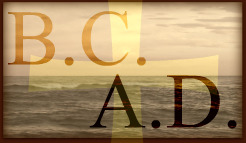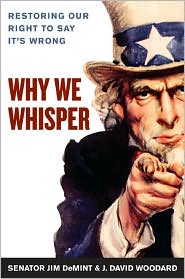Its amazing how this article explains how two religious groups which are demonic have become great friends.
-----------------------------------------------------
----
By David Haldane
April 02, 2008 in print edition B-1
The Mormon Church has to be among the most outgoing on Earth; in recent years its leaders have reached out to, among others, Latinos, Koreans, Catholics and Jews.
One of the most enthusiastic responses, however, has come from what some might consider a surprising source: U.S. Muslims.
“We are very aware of the history of Mormons as a group that was chastised in America,” says Maher Hathout, a senior advisor to the Muslim Public Affairs Council in Los Angeles. “They can be a good model for any group that feels alienated.”
Which perhaps explains an open-mosque day held last fall at the Islamic Center of Irvine. More than half the guests were Mormons.
“A Mormon living in an Islamic society would be very comfortable,” said Steve Young, a member of the Church of Jesus Christ of Latter-day Saints attending the event.
The sentiment is echoed by Muslims. “When I go to a Mormon church I feel at ease,” said Haitham Bundakji, former chairman of the Islamic Society of Orange County. “When I heard the president [of LDS] speak a few years ago, if I’d closed my eyes I’d have thought he was an imam.”
Though the relationship has raised eyebrows and provided ammunition for critics of both religions, Mormons and Muslims have deepening ties in the United States.
What binds them has little to do with theology: Mormons venerate Jesus as interpreted by founder Joseph Smith, while Muslims view Muhammad as God’s prophet. Based on shared values and a sense of isolation from mainstream America, the connection was intensified by 9/11 and cemented by the Southeast Asia tsunami. It is especially evident in Southern California, with large Mormon and Muslim populations.
The Mormon Church has become the biggest contributor to Buena Park-based Islamic Relief, touted by its administrators as the West’s largest Muslim-based charity. Relief officials say the church has donated $20 million in goods and services since the 2004 tsunami, equal to about 20% of the charity’s annual budget.
Brigham Young University in Utah, the church’s major institution of higher learning, features what is thought to be one of the world’s best programs for translating classic Islamic works from Arabic to English. Though created primarily for academic purposes, the results have impressed Muslims flattered by the close attention.
“It shows they have a keen interest in the Muslim world,” said Levent Akbarut, a member of the Islamic Congregation of La Cañada Flintridge.
And Mormons and Muslims say they often are co-hosts of educational and social programs at which, though some may be angling for long-term doctrinal influence, very little open proselytizing of each other seems to take place. “We have a very close and friendly relationship,” said Keith Atkinson, West Coast LDS spokesman.
Mormons “explain our faith to anyone who will listen” and “treat Muslims like anybody else,” said Elder Dallin H. Oaks, a member of the Quorum of the 12 Apostles, one of the church’s top governing bodies in Salt Lake City. But Oaks added that “we don’t preach to people who would be disenfranchised” or likely offended.
Arnold H. Green, a history professor at BYU, has traced how early Mormons in the 19th century were hounded by accusations that church founder Smith was the American Muhammad. The first Mormons angrily denied any connection to the Muslim prophet but gradually accepted some comparisons, particularly that both religions were founded by post-Christian prophets with strong sectarian views. “As the church grew into a global faith,” Green wrote in a 2001 essay, “its posture toward Islam became … more positive” until, today, “the two faiths have become associated in several ways, including Mormonism’s being called the Islam of America.”
Both religions strongly emphasize family. They tend toward patriarchy, believing in feminine modesty, chastity and virtue. And although Islam discourages dancing involving both sexes, Mormons report that church-sponsored “modesty proms” commonly draw Islamic youths.
Both faiths adhere to religion-based health codes, including prohibitions against alcohol, but Mormons and Muslims share something more: membership in quickly growing minority religions that many other Americans have sometimes viewed with suspicion and scorn.
“We both come from traditions where there has been persecution in the past and continues to be prejudice,” said Steve Gilliland, LDS director of Muslim relations for Southern California. “That helps us Mormons identify with Muslims.”
A recent national survey by the Pew Research Center for the People & the Press and the Pew Forum on Religion & Public Life found that although a thin majority of those polled expressed positive opinions of Muslims and Mormons, the number was significantly less than those favoring Roman Catholics or Jews.
More than half the respondents said they had little or no awareness of the precepts and practices of either faith. But 45% saw Islam as more likely than other religions to encourage violence, and 31% said that Mormons weren’t Christian.
Armand L. Mauss, a Mormon and professor emeritus of sociology at Washington State University specializing in religious movements, said that unlike mainstream Christians and Jews, Muslims and Mormons “tend to make fairly stringent demands for religious conformity on their members.” These practices, he said, include discouraging marriage outside the religion and observing dietary laws, such as the Mormon prohibition against tobacco, alcohol and caffeine.
But the clincher, according to Mauss, is that both communities “have been stung in recent years by the recurrence of scandals over which they have no control.” For Muslims, the obvious example is 9/11.
For Mormons, Mauss says, the problem is polygamy, which, though rejected by the mainstream church more than a century ago, is still the first thing that occurs to many Americans when they think about the religion.
The relationship between the two religions has sometimes drawn ire.
Scattered throughout the Internet are numerous tracts, many by evangelical Christians, comparing the two religions in less-than-complimentary terms. “Modern Mohammedanism has its Mecca in Salt Lake,” reads one. “Clearly the Koran was Joseph Smith’s model, so closely followed as to exclude even the poor pretension of originality in his foul ‘revelations.’ ”
In Southern California, the relationship between the two religions became closer after the Los Angeles riots in 1992, when the Mormon Church, hoping to promote diversity, invited several ethnic and religious groups to attend the opening of its new temple in San Diego. Muslims responded in higher numbers and with greater enthusiasm than most others. The church later feted prominent Muslims in Salt Lake City.
“We were treated as dignitaries,” said Shabbir Mansuri, founding director of the Muslim-based Institute on Religion and Civic Values in Fountain Valley, which encourages tolerance through research and education. “I met with the president of LDS and the governor of Utah. We were sitting in the front row of the Tabernacle. Mormons would give their right arms to be there.”
The relationship deepened on Sept. 11, 2001. The first call Mansuri received that day came from Elder Oaks. “He was concerned and wanted to send us a very clear message that we were in their prayers,” Mansuri recalls. “It was like having someone who loves and cares for you; not so much a Mormon reaching out to me as a fellow believer reaching out.”
Oaks said he was primarily motivated by friendship. “I consider Shabbir Mansuri a brother,” he said. “He’s a good man who’s doing good work. We try to be friendly to all people, and in the days after 9/11, lots of Muslims felt rejected.”
In the months that followed, Mormons nationwide opened their churches to Islamic worshipers fearful of reprisals in their mosques. When Muslims needed a cannery to process the Bosnia-bound beef slaughtered for the annual Eid al-Adha observance, the Mormons offered theirs in Utah.
Following the tsunami that devastated many Islamic communities, the Mormon church, which has a history of contributing to a wide range of charities, began working closely with Islamic Relief. Though LDS had helped Muslims before – providing 195 tons of powdered milk, hygiene kits, medical supplies and other provisions – it had never previously worked with this major Islamic agency, or on such a scale.
And though the church continues to aid non-Muslim causes, only two of the six major disaster assistance efforts listed on its website since 2004 – Hurricane Katrina and Africa measles vaccination campaigns – did not primarily affect Islamic nations.
Locally, LDS helped the Islamic Society of Orange County’s Al-Rahman Mosque in Garden Grove develop its library with a $15,000 donation. “Their beliefs are similar to ours,” Robert Bremmer, a Mormon bishop, said at that facility’s open-mosque day in 2005. “They have modest dress, and so do we. They believe in all the [Old Testament] prophets, as do we.”
During Al-Rahman’s most recent open house in August, attended by many Mormon elders and dignitaries, a tribute was paid to a deceased LDS official supportive of the mosque.
The effects of Muslim-Mormon interaction are showing in subtle ways too. Spending time with Mormons, Bundakji says, has inspired him to stop drinking coffee.
“I thought they had a good idea,” he says. “Now I don’t drink caffeine and I don’t have headaches anymore.”
david.haldane@latimes.com
Tuesday, August 19, 2008
Subscribe to:
Post Comments (Atom)











No comments:
Post a Comment